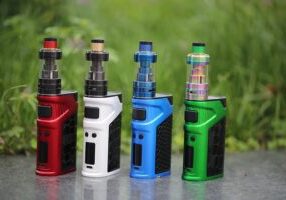Pleasure addict…
Addiction
Addiction involves craving for something intensely, loss of control over its use, and continuing involvement with it despite adverse consequences. Addiction changes the brain, first by subverting the way it registers pleasure and then by corrupting other normal drives such as learning and motivation. Although breaking an addiction is tough, it can be done.
What causes addiction?
The word “addiction” is derived from a Latin term for “enslaved by” or “bound to.” Anyone who has struggled to overcome an addiction—or has tried to help someone else to do so—understands why. Addiction exerts a long and powerful influence on the brain that manifests in three distinct ways: craving for the object of addiction, loss of control over its use, and continuing involvement with it despite adverse consequences. For many years, experts believed that only alcohol and powerful drugs could cause addiction. Neuroimaging technologies and more recent research, however, have shown that certain pleasurable activities, such as gambling, shopping, and sex, can also co-opt the brain.
Although a standard U.S. diagnostic manual (the Diagnostic and Statistical Manual of Mental Disorders, Fourth Edition or DSM-IV) describes multiple addictions, each tied to a specific substance or activity, consensus is emerging that these may represent multiple expressions of a common underlying brain process.
New insights into a common problem
Nobody starts out intending to develop an addiction, but many people get caught in its snare. Consider the latest government statistics:
-
- In June 2017 the Cape Town Drug Counselling Centre reported a spike in hard drug abuse among Western Cape teenagers. Apparently the four substances causing the biggest problems at that time were: dagga, alcohol, heroin and tik. Could the Western Cape High court decision on legalisation of dagga, directly impact youth drug use in South Africa?
- Drug consumption in South Africa is twice the world norm.
- 15% of South Africa’s population have a drug problem.
- Drug abuse is costing South Africa R20-billion a year and could pose a bigger threat to the country’s future than the Aids pandemic.
- According to SAPS figures, 60 percent of crimes nationally were related to substance abuse. In the Western Cape, the figure was closer to 80 percent. The perpetrators of these crimes are either under the influence of substances, or trying to secure money for their next fix.
- The recently-released United Nations World Drug Report had named South Africa as one of the drug capitals of the world.
- Studies show that the average age of drug dependency in South Africa to be 12 years old, and dropping.
- Corruption is a problem. Earlier this month Hawks arrested a Cape Town law enforcement officer found with ‘gang-linked’ mandrax.
- Flakka is reportedly priced from R400 to R1 000. In August last year a teenager in Florida, US, stabbed a couple and ate the man’s face. Austin Harrouf is believed to have taken the drug before killing the couple.
Just as cardiovascular disease damages the heart and diabetes impairs the pancreas, addiction hijacks the brain. This happens as the brain goes through a series of changes, beginning with recognition of pleasure and ending with a drive toward compulsive behavior.
Pleasure principle
The brain registers all pleasures in the same way, whether they originate with a psychoactive drug, a monetary reward, a sexual encounter, or a satisfying meal. In the brain, pleasure has a distinct signature: the release of the neurotransmitter dopamine in the nucleus accumbens, a cluster of nerve cells lying underneath the cerebral cortex (see illustration). Dopamine release in the nucleus accumbens is so consistently tied with pleasure that neuroscientists refer to the region as the brain’s pleasure center.
All drugs of abuse, from nicotine to heroin, cause a particularly powerful surge of dopamine in the nucleus accumbens. The likelihood that the use of a drug or participation in a rewarding activity will lead to addiction is directly linked to the speed with which it promotes dopamine release, the intensity of that release, and the reliability of that release.
Even taking the same drug through different methods of administration can influence how likely it is to lead to addiction. Smoking a drug or injecting it intravenously, as opposed to swallowing it as a pill, for example, generally produces a faster, stronger dopamine signal and is more likely to lead to drug misuse.
Brain’s Reward Center
Addictive drugs provide a shortcut to the brain’s reward system by flooding the nucleus accumbens with dopamine. The hippocampus lays down memories of this rapid sense of satisfaction, and the amygdala creates a conditioned response to certain stimuli.
Learning process
Scientists once believed that the experience of pleasure alone was enough to prompt people to continue seeking an addictive substance or activity. But more recent research suggests that the situation is more complicated. Dopamine not only contributes to the experience of pleasure, but also plays a role in learning and memory—two key elements in the transition from liking something to becoming addicted to it. According to the current theory about addiction, dopamine interacts with another neurotransmitter, glutamate, to take over the brain’s system of reward-related learning. This system has an important role in sustaining life because it links activities needed for human survival (such as eating and sex) with pleasure and reward.
The reward circuit in the brain includes areas involved with motivation and memory as well as with pleasure. Addictive substances and behaviors stimulate the same circuit—and then overload it. Repeated exposure to an addictive substance or behavior causes nerve cells in the nucleus accumbens and the prefrontal cortex (the area of the brain involved in planning and executing tasks) to communicate in a way that couples liking something with wanting it, in turn driving us to go after it. That is, this process motivates us to take action to seek out the source of pleasure.
Do you have addiction?
Determining whether you have addiction isn’t completely straightforward. And admitting it isn’t easy, largely because of the stigma and shame associated with addiction. But acknowledging the problem is the first step toward recovery.
A “yes” answer to any of the following three questions suggests you might have a problem with addiction and should—at the very least—consult a health care provider for further evaluation and guidance.
- Do you use more of the substance or engage in the behavior more often than in the past?
- Do you have withdrawal symptoms when you don’t have the substance or engage in the behavior?
- Have you ever lied to anyone about your use of the substance or extent of your behavior?
Development of tolerance
If the sun is too bright, you put on sunglasses. If the volume on your television is too loud, you turn it down. The brain works in a similar way. In an effort to adjust itself to these surges of dopamine (and other neurotransmitters), the brain reacts by producing less dopamine or by shrinking the amount of receptors that can receive the signal. This means that the ability to feel pleasure from any activity is significantly reduced. Natural rewards barely register in the reward system anymore, leaving the person feeling deflated, depressed and unable to enjoy the activities they once found pleasurable – and instead they seek dopamine-flooding drugs. Because the brain’s reward system is less reactive, a person will also need to take more of the drug than before in order to get the same feeling. This is what is called tolerance.
Over time, the brain adapts in a way that actually makes the sought-after substance or activity less pleasurable. In nature, rewards usually come only with time and effort. Addictive drugs and behaviors provide a shortcut, flooding the brain with dopamine and other neurotransmitters. Our brains do not have an easy way to withstand the onslaught. Addictive drugs, for example, can release two to 10 times the amount of dopamine that natural rewards do, and they do it more quickly and more reliably. In a person who becomes addicted, brain receptors become overwhelmed. The brain responds by producing less dopamine or eliminating dopamine receptors—an adaptation similar to turning the volume down on a loudspeaker when noise becomes too loud. As a result of these adaptations, dopamine has less impact on the brain’s reward center. People who develop an addiction typically find that, in time, the desired substance no longer gives them as much pleasure. They have to take more of it to obtain the same dopamine “high” because their brains have adapted—an effect known as tolerance.
Compulsion takes over
At this point, compulsion takes over. The pleasure associated with an addictive drug or behavior subsides—and yet the memory of the desired effect and the need to recreate it (the wanting) persists. It’s as though the normal machinery of motivation is no longer functioning. The learning process mentioned earlier also comes into play. The hippocampus and the amygdala store information about environmental cues associated with the desired substance, so that it can be located again. These memories help create a conditioned response—intense craving—whenever the person encounters those environmental cues. Cravings contribute not only to addiction but to relapse after a hard-won sobriety. A person addicted to heroin may be in danger of relapse when he sees a hypodermic needle, for example, while another person might start to drink again after seeing a bottle of whiskey. Conditioned learning helps explain why people who develop an addiction risk relapse even after years of abstinence.



